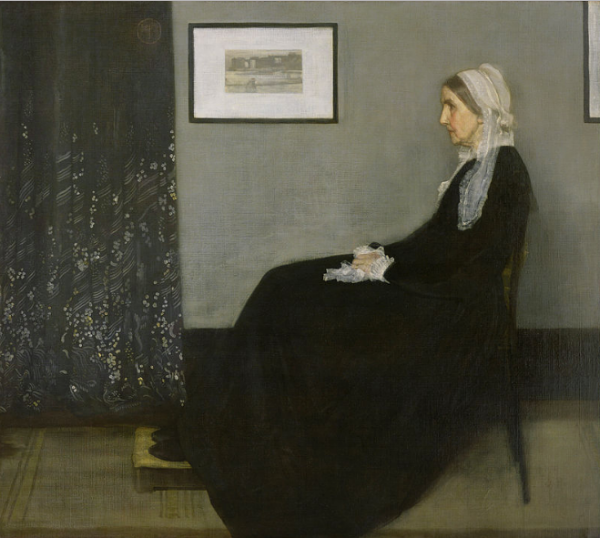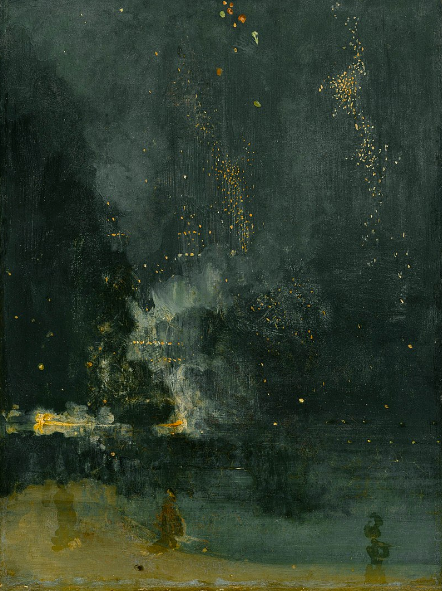Whistler’s Butterfly: Creative Talent Often Comes with a Sting in Its Tail
‘[Whistler] is indeed one of the very greatest masters of painting, in my opinion. And I may add that in this opinion Mr Whistler entirely concurs.’
Oscar Wilde
For much of his career the artist James McNeill Whistler inscribed his work with a stylised butterfly monogram based on his JW initials. He designed the device with elegant wings and curved antennae. And in time he gave it a barbed tail.
In many ways Whistler’s butterfly represented his own talent and personality. He was an articulate, charismatic, independent spirit, who could create extraordinary beauty. But his gifts came hand-in-hand with vanity and a sharp tongue.
‘I maintain that two and two would continue to make four, in spite of the whine of the amateurs for three, or the cry of the critic for five.’
Born in 1834 to prosperous parents in Lowell, Massachusetts, in his youth Whistler travelled to Russia and England. He was educated (somewhat reluctantly) at West Point, studied art in Paris and settled in London in 1859.
Whistler immediately found himself at odds with the art establishment. He disliked the narrative and naturalism that were the order of the day. He detested the flattery and sentiment to which Victorian audiences were so partial. He rejected the conventional notion that art had a moral or social function. Rather he believed in ‘art for art’s sake.’
Working from a limited colour palette, with balanced composition, Whistler sought to achieve ‘tonal harmony’. He often compared his work with music. He painted subdued, thoughtful, full-length portraits. He painted dreamy ‘nocturnes’ of the Thames at rest. He painted his mother in profile, seated, in an austere black dress, her white bonnet atop neat grey hair, her lace-cuffed hands clasping a handkerchief.
Arrangement in Grey and Black No 1 or Whistler’s Mother
Whistler was small of stature, but large of personality. He dressed like a dandy, cultivated a curly moustache and sported a monocle. He enjoyed the Bohemian life, parties and entertaining. And he found a natural soul mate in Oscar Wilde.
Wilde: ‘I wish I’d said that.’
Whistler: ‘You will, Oscar, you will!’
In truth Whistler was rather arrogant and egotistical, something of a self-publicist.
‘I can’t tell you if genius is hereditary because heaven has granted me no offspring.’
He may have needed an audience, but he didn’t need friends. Whistler liked to pick fights.
‘I am not arguing with you – I am telling you.’
Whistler’s unconventional views and combustible temperament inevitably brought him into conflict with the forces of conservatism. Famously in 1877 he sued John Ruskin for libel after the critic had accused him of ‘flinging a pot of paint in the public’s face.’
At the trial Ruskin’s counsel queried the price Whistler had charged for ‘Nocturne in Black and Gold – The Falling Rocket:’
Nocturne in Black and Gold: The Falling Rocket
‘The labour of two days is that for which you ask two hundred guineas?’
‘No,’ replied Whistler, ‘I ask it for the knowledge I have gained in the work of a lifetime.’
Whistler won the case, but was awarded only a farthing’s damages. The court costs bankrupted him.
Bitter experience didn’t convince Whistler to moderate his views. In 1890 he published ‘The Gentle Art of Making Enemies’, a record of, and reflections on, the Ruskin case. He dedicated it to ‘the rare few, who, early in life, have rid themselves of the friendship of the many.’
Whistler reminds us that creativity doesn’t necessarily come hand-in-hand with congeniality; that innovators don’t always arrive with good table manners; that inspirational talent often has a sting in its tail.
Truly original thinkers must by definition be somewhat egotistical. They have to attach a particular value to their own distinctive worldview. They must feel comfortable with going against the crowd.
This creates dilemmas for Agency leadership. We want our creatives to break convention in their work, but we balk at too much unconventional behaviour in the office. We want them to express their individuality, but to do so within a team; to be emotional on paper, but rational in meetings. We want our talent to be creative, but we don’t want it to destroy too many things along the way.
I think leaders of creative businesses need to be tolerant. We have to accommodate a certain amount of vanity, misbehaviour, sharp words and rule breaking – if it is in the service of the work. But when eccentricity creates collateral damage; when it is self-serving and injurious to colleagues, then we have to step in. We have to draw the line at abuse of power.
Creative leaders must learn to harness talent to a commercial goal without diminishing its potency, and without compromising the company’s values. This is not easy. It requires judgement. And we must be ever mindful of Whistler’s own observation:
‘An artist is not paid for his labor, but for his vision.’
No. 148


